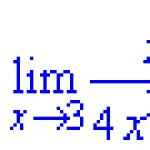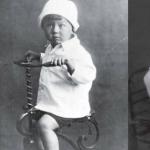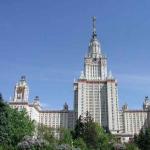Excavations of the fortress on the Tel Khyber hill (highlighted in red)
facebook/tellkhaiber
Joint UK-Iraqi archaeological expedition discovered a vast fortress built by the dynasty of kings of the Primorye, or Sea Country, who ruled southern Mesopotamia in the second millennium BC. Until now, the rebel kings were known only from short messages in ancient sources, but no material evidence of their existence could be found. Ur Region Archeology Project expedition member Mary Shepperson's report on the discovery was published by The Guardian.
The Ur Region Archeology Project expedition works in the southern governorate (province) of Dhi Qar in the vicinity of the modern city of Nasiriyah. Archaeologists have been studying the vast Tell Khaiber hill since 2013; their attention was drawn to the ruins of a vast building on the top of a hill. Excavations have shown that the area of the building is huge - 4400 square meters, it dominates a small settlement and is surrounded by a mud brick wall. The thickness of the walls reaches 3.5 meters, there is only one gate in this wall and they are narrow, and watchtowers are placed along the perimeter.
This type of fortified citadel is not typical for Bronze Age Mesopotamia, and the walls with closely spaced towers have no analogues at all. Behind the walls in the large building, living quarters, warehouses, kitchens, halls, an administrative wing, and workshops are identified. Such multifunctionality is unusual for palace and temple complexes in Mesopotamia. Archaeologists concluded that the fortress protected the surrounding population within its walls, who left the unprotected “village” in case of danger.
In the building, archaeologists managed to find an archive - about 150 cuneiform tablets written in Akkadian. From them it became clear that the fortress belonged to the rebellious dynasty of kings of Primorye, or the Sea Country. These rulers rebelled against Samsu-iluna, the son and successor of King Hammurabi, in the 18th century BC. The kings of Primorye separated the southernmost part of Mesopotamia from the lands of Samsu-iluna - a swampy region in the lower reaches of the Tigris and Euphrates - and ruled this region until the middle of the 15th century BC.
The names of the rulers and some details of their military campaigns were known from Babylonian king lists and a small number of other written sources. In particular, in 2009, tablets relating to the reign of the kings of Primorye from the private collection of the Norwegian collector Martin Schøyen were published for the first time, shedding light on some episodes of the reign of the kings Peshgaldaramesh and Adar Kalamma (Ayadaragalama). Several tablets found in Tel Khyber date back to the reign of Adar Kalamma (the turn of the 16th and 15th centuries BC).
The Tel Khyber archive contains materials about the economic activities of the fortress, its connections with the nearby ancient Sumerian city of Ur. Teaching tablets have been found that were used by scribes who spoke the Akkadian language to master the Sumerian language, which had long since fallen into disuse. Some dynastic names of the kings of Primorye are also Sumerian, which is unusual and perhaps indicates the persistence of “the confrontation between the former Sumerian south and the Akkadian north of Lower Mesopotamia” (see: “History of the Ancient East”, edited by I.M. Dyakonov. M .: “Science”, 1983).
The lands of the coastal separatist kings were conquered in the 15th century BC by the Kassite kings Kashtiliash III and Ulam-Buriash. After this war, southern Mesopotamia no longer fought against the rulers from the north.
In Mesopotamia, a variety of finds are sometimes found. For example, one of the artifacts found there in the 30s of the last century for a long time was considered a toy, and only recently that it was actually a weapon, and not an “ancient spinner”.
Yulia ShtutinaThe mythical city of Qalatga Darband was considered missing for more than 2 thousand years. And he was found thanks to spy photographs taken by the CIA in the 1960s. While studying them, a group of Iraqi and British archaeologists noticed the remains of ancient walls in one of the Iraqi settlements.
According to scientists, this city dates back to the 1st and 2nd centuries BC. was located 10 kilometers southeast of Raniya in the Sulaymaniyah province in Iraqi Kurdistan. It is believed that Alexander the Great founded the city in 331 BC, and then lived there along with his subjects, who numbered about three thousand. Qalatga Darband translated from Kurdish means “Castle of the Mountain Pass”.
It is located on the route of Alexander the Great's campaign against the Persian king Darius III.

A group of researchers from the UK is currently engaged in excavations. They have already established that the city was built by Alexander the Great himself. After processing photographs taken from a drone, archaeologists were able to identify a large municipal building hidden under wheat fields.

John McGuinness (the group's leader) believes that the city came under significant Greek and Roman influence during the first and second centuries BC. Several statues have already been brought to the surface.
Excavations are underway on the river bank
On the territory of modern Iraq, archaeologists have found a city that was allegedly founded by Alexander the Great himself.
The ancient ruins were noticed after studying declassified spy videos from the 1960s, writes Science Alert.
First, a team of experts from the British Museum discovered the outline of a large rectangular building hidden under fields of wheat and barley. "Where there are walls underground, wheat and barley don't grow as well, so there are color differences in plant growth," said archaeologist John McGinnis from the British Museum.
The city, which was discovered by British archaeologists, was founded by Alexander the Great in 331 BC. He lived here for some time with veterans of his military campaigns. Apparently, the city was called Kalatga Darband, which roughly translates to “castle on a mountain pass.” The city was on the route taken by Alexander and his army to attack King Darius III of Persia.
"It's early days, but we think it was a bustling town on the road from Iraq to Iran. You can imagine the wine merchants supplying the soldiers," says John McGinnis.
Archaeologists have already found the foundations of a number of large buildings, including fortified walls. A stone press was also discovered, which could have been used in winemaking or oil production. Fragments of tiles and statues of Persephone and Adonis, heroes of Greek myths, were also found. The exact dating of the finds has not yet been established.
Excavations are expected to continue until 2020, so there is good chance that we will learn a lot more about this lost city, journalists note.
Previously NV reported that scientists. The age of the unusual grave is estimated at about four thousand years.
ISIS's main stronghold in Iraq
The Islamic State captured Mosul in the summer of 2014. The jihadists occupied the second largest city in the country with virtually no resistance. Since then, it has become the capital of the Islamic State, from where militants have advanced into new territories. This city in northern Iraq has become a symbol of the brutality of the Islamic State and the fight against terrorists. The active phase of the liberation of Mosul began in October 2016.

Who is liberating Mosul?
The main striking force for the liberation of Mosul was the Iraqi army, led by special forces units - the most combat-ready and experienced Iraqi military. However, its forces are not enough to fight thousands of IS jihadists. The Iraqi army's operation is aided by Kurdish forces, Sunni tribal militias and the so-called international coalition led by the United States, which carries out air strikes.

Battle for Mosul: ISIS's last stand in Iraq?
Mass executions of IS opponents
During the liberation of Mosul, mass graves of local residents who were killed by terrorists were found in its suburbs. Previously, the UN has repeatedly reported numerous executions in Mosul. For example, 600 inmates of a local prison were killed. Victims also included those who refused to fight on the side of IS, adhere to the laws of the caliphate, or simply tried to escape from the city.

Battle for Mosul: ISIS's last stand in Iraq?
Famine in Mosul
During the active phase of the operation to liberate Mosul, famine began in the city. ISIS terrorists took food from residents. Many of the refugees are in critical condition due to malnutrition, the International Committee of the Red Cross said. The photo shows the distribution of humanitarian aid from the ICRC to residents of Mosul.

Battle for Mosul: ISIS's last stand in Iraq?
IS may have used chemical weapons in Mosul
Trying to stop the offensive on Mosul, IS militants, according to US authorities, could use chemical weapons containing elements of mustard gas and mustard gas. In early March, about ten patients were admitted to local hospitals with symptoms of exposure. chemical substances. Representatives of the Red Cross are "deeply alarmed" by these facts.

Battle for Mosul: ISIS's last stand in Iraq?
The UN risks being unable to cope with the flow of refugees
As Mosul was liberated, some of its residents were able to flee. Up to 50 thousand people leave the city every day. UN officials said they fear they will not be able to cope with the flow of refugees. Before the IS takeover, almost one and a half million people lived in Mosul. Now, according to various estimates, about 750 thousand residents remain there. How many people died during this time has yet to be established.

Battle for Mosul: ISIS's last stand in Iraq?
Network of underground tunnels
During the siege, militants use guerrilla warfare methods: they dug a whole network of tunnels under the city and from there launch attacks on Iraqi soldiers, including using suicide bombers. Previously, there were also reports of “human shield” tactics on the part of jihadists, according to which terrorists from the “Islamic State” covered themselves during the battles civilians Mosul.

Battle for Mosul: ISIS's last stand in Iraq?
Where will ISIS fighters go?
After the defeat in Mosul, the militants will have virtually no strongholds. The only one Big City, which is still under their control, is Syrian Raqqa. There the Islamic State will probably give last Stand. Experts are confident that its outcome is a foregone conclusion, since serious forces from several large states are involved in the fight against IS.
Chechen authorities found more than 40 more Russians in Iraq
13 women and 28 children from Dagestan, Chechnya and other regions of Russia were found in an Iraqi refugee camp, the republican authorities reported today.
As the "Caucasian Knot" wrote, on December 14, the representative of the Chechen parliament in the Federation Council, Ziyad Sabsabi, announced that 93 Russian citizens had been returned from the Middle East, and that more than 150 more people were planned to be taken out of Syria and Iraq in the near future.
The Chechen authorities are using the return of women and children from Syria and Iraq for propaganda purposes, residents of Chechnya believe.
A group of 41 Russian citizens was found in a refugee camp in Iraq, the "Caucasian Knot" correspondent reported today. staff member heads and government of Chechnya.
“These are 13 women and 28 children. The leadership of the republic was informed about this by the representative of the head of Chechnya in the countries of the Middle East and North Africa, Senator Ziyad Sabsabi, who is now in Iraq,” he said.
Most of these women are natives of Dagestan, a representative of the Chechen authorities clarified. “Also among them is one resident of Chechnya and a native of the Moscow and Bryansk regions with children,” he said.
The head of Chechnya Ramzan Kadyrov on his Instagram page today confirmed this information. Among the children found is a three-year-old cousin of girls previously brought home from Dagestan; her parents died “under American bombs in Mosul,” he specified. Ramzan Kadyrov .
Let us note that information about the number of women and children returning from Syria and Iraq comes only from the authorities of Chechnya; the "Caucasian Knot" does not have confirmation of this information.
Chechen women brought from Syria reported that they were able to return to Russia after agreeing to criminal prosecution. Thus, the Chechen women who returned to Grozny on November 13 were questioned by law enforcement officers and then released, Chechen authorities say. The "Caucasian Knot" does not have confirmation of information that these women were actually released, were not persecuted and had no restrictions on their rights. Nothing is known about their fate, although the Chechen authorities report that they are helping in the rehabilitation of children returned from Syria.
Some of the women were detained and detained in Dagestan after their return. Thus, Zagidat Abakarova and Muslimat Kurbanova were taken into custody in Makhachkala on October 24, despite the fact that both women have infants. In their case, there are petitions from three deputies of the People's Assembly, who asked the prosecutor to consider the confessions of Abakarova and Kurbanova and “make a lawful decision,” their lawyer said.




